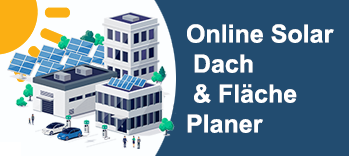The Invisible Shackles: When Standstill Becomes a Strategy – Operational Blindness, Laziness and Fear as Causes
Xpert pre-release
Language selection 📢
Published on: October 15, 2025 / Updated on: October 15, 2025 – Author: Konrad Wolfenstein

The Invisible Shackles: When standstill becomes a strategy – operational blindness, convenience, and fear as causes – Image: Xpert.Digital
Why organizations fail when they lose the courage to change
The paralysis of decision-makers
When discussions arise in companies about what isn't working or which processes should be avoided, a fundamental organizational problem manifests itself: the systematic avoidance of necessary changes. These seemingly harmless conversations about obstacles and impossibilities are, in fact, symptoms of a deep-rooted organizational illness that leads companies into a state of self-imposed stagnation. The causes of this phenomenon are rooted in human nature and are exacerbated by structural deficiencies. Employees' existential fears, managers' complacency, and a pervasive organizational blindness create a toxic environment in which innovation is stifled and change is perceived as a threat.
If it's clarified what doesn't work or which process shouldn't be followed, that's wrong. Then either you, the company, or the team are at fault. The main causes are employees' fears for their future, complacency, and organizational blindness.
The consequences are serious: Organizations in this state not only lose their competitiveness but also their ability to renew themselves. They become living fossils in a rapidly changing economic landscape. This analysis illuminates the underlying mechanisms of organizational development barriers, revealing both their historical roots and practical solutions. It becomes clear that the problem lies not with individuals, but with the systemic structures that reward resistance to change and penalize innovation.
Historical roots of torpor: A chronological classification
The emergence of organizational development barriers is not a modern phenomenon, but has its roots in the industrial structures of the 20th century. Taylorist principles of division of labor and standardization created efficient but rigid organizations that emphasized stability over flexibility. These historically evolved structures established a culture of predictability in which routines were considered success factors and deviations were viewed as disruptions.
The postwar period reinforced this tendency with the economic boom, which seemingly proved that tried-and-tested methods lead to lasting success. Companies developed hierarchical structures that centralized decisions and shifted responsibility upwards. This concentration of power simultaneously created existential anxiety among employees, who sought security in conformity, and complacency among managers, who secured their position through stability.
With the acceleration of technological change since the 1980s, the discrepancy between organizational inertia and market dynamics became increasingly apparent. Nevertheless, many companies remained entrenched in their established structures, as the short-term pain of change seemed greater than the long-term benefits of adaptation. This historical predisposition explains why status quo bias is so deeply rooted in organizational DNA today and why systematic barriers to development are accepted as normal operating conditions.
Anatomy of the blockade: The central mechanisms and building blocks
The mechanisms of organizational development barriers function according to recognizable patterns that can be divided into three main categories: psychological barriers, structural obstacles, and cultural factors. These elements reinforce each other and create a self-sustaining system of stagnation.
Existential anxieties form the psychological foundation of change resistance. Employees develop a deep-rooted fear of losing their jobs, their skills, or their social position within the organization. These fears are not irrational but are based on real experiences with restructuring, where changes actually led to disadvantages for individuals. This fear manifests itself in various forms: fear of being overwhelmed by new technologies, concern about losing professional authority, and concerns about changing team structures.
Complacency at the executive level arises from the efficiency gains of established routines. Managers who have been successful for years with tried-and-tested methods see no immediate reason for change. This attitude is reinforced by cognitive distortions: The status quo bias makes existing conditions appear natural and desirable, while alternatives are perceived as risky and destabilizing. This complacency is further encouraged by organizational structures that link change initiatives with high bureaucratic effort.
Organizational blindness represents the cultural dimension and describes the loss of the ability to objectively evaluate established processes. It arises from years of habituation to certain working methods and manifests itself in the automatic justification of existing methods with the argument "We've always done it this way." Organizational blindness is particularly insidious because it reinforces itself: The longer an organization persists in established patterns, the more difficult it becomes to even consider alternative approaches.
Modern manifestations: meaning and application in today's context
In today's business world, barriers to development have adapted to digital realities, manifesting in more subtle but no less damaging forms. Paradoxically, digitalization has both created new opportunities for change and spawned new forms of resistance.
Change fatigue has become a widespread phenomenon, in which organizations and their employees are exhausted by a flood of change initiatives. This fatigue leads to a reflexive rejection of new projects, regardless of their objective merit. Studies show that 60 to 70 percent of all change projects fail, often not due to a lack of technical feasibility, but due to human factors.
The complexity of modern technologies is exacerbating existing existential fears. Artificial intelligence, automation, and digital transformation are perceived as existential threats that could render not only jobs but entire professions obsolete. This perception leads to preemptive resistance to technological innovations, even if they could improve the working environment.
At the same time, this comfort has spread to new areas. Leaders socialized with traditional management methods are showing resistance to agile working methods, data-driven decision-making, and flat hierarchies. They prefer familiar control mechanisms to the uncertainties of self-organizing teams.
Modern operational blindness manifests itself in the inability to recognize digital opportunities. Companies focus on automating existing processes instead of developing fundamentally new business models. They digitize inefficiencies instead of eliminating them, thereby creating digital versions of analog problems.
🎯🎯🎯 Benefit from Xpert.Digital's extensive, five-fold expertise in a comprehensive service package | BD, R&D, XR, PR & Digital Visibility Optimization

Benefit from Xpert.Digital's extensive, fivefold expertise in a comprehensive service package | R&D, XR, PR & Digital Visibility Optimization - Image: Xpert.Digital
Xpert.Digital has in-depth knowledge of various industries. This allows us to develop tailor-made strategies that are tailored precisely to the requirements and challenges of your specific market segment. By continually analyzing market trends and following industry developments, we can act with foresight and offer innovative solutions. Through the combination of experience and knowledge, we generate added value and give our customers a decisive competitive advantage.
More about it here:
Missed momentum: How development barriers sideline industries
Corporate realities: Concrete use cases and illustrations
The effects of systematic development barriers can be illustrated by concrete examples from corporate practice, which show how seemingly rational decisions lead to long-term competitive disadvantages.
A classic example can be found in the German automotive industry, where traditional manufacturers underestimated the importance of electromobility for years. The obstacles to development manifested themselves at all levels: Engineers who saw their expertise in combustion engines threatened raised technical objections to electric alternatives. Management, which had generated profits with successful combustion engines for decades, saw no immediate need for action. The corporate culture was shaped by the belief that German engineering was unbeatable when it came to combustion engines. This combination of existential fears among specialists, complacency among management, and corporate blindness to market changes led to a delayed and costly response to the industry's transformation.
A second example comes from the retail sector, where established companies often responded only superficially to digitalization. Instead of fundamentally rethinking their business models, they simply digitized existing processes. The obstacles to development manifested themselves in characteristic patterns: Sales staff resisted the introduction of digital tools for fear of job losses and a lack of technical expertise. Management shied away from investing in new systems because existing processes were still generating profits. The organizational culture was shaped by the belief that no technology could replace personal contact. This attitude led to online competitors gaining massive market share while traditional retailers remained stuck in their familiar structures.
Both examples illustrate a common pattern: The obstacles to development arise not from individual wrong decisions, but from the systematic interaction of individual fears, organizational inertia, and cultural blindness. They also demonstrate that short-term stability undermines long-term viability.
Downsides of persistence: A critical discussion
The systematic avoidance of change leads to a series of serious organizational pathologies that go far beyond the obvious competitive disadvantages and undermine the foundations of entrepreneurial success.
Innovation becomes a structural problem when development barriers dominate. Organizations lose their ability to solve problems creatively because new ideas are automatically perceived as a threat to existing structures. Innovative power declines not only quantitatively but also qualitatively: Even when new ideas emerge, they are so diluted by bureaucratic hurdles and cultural resistance that they lose their original impact.
Talent exodus is a direct consequence of stagnation-friendly corporate cultures. High-performing employees, especially from younger generations, leave organizations that demonstrate resistance to change in favor of more agile alternatives. This brain drain further exacerbates development barriers, as those who remain behind are often those who have come to terms with the status quo.
Customer losses result from the inability to adapt to changing needs. Companies with strong development barriers react too slowly to market changes and fall behind on customer expectations. They continue to produce solutions for problems that no longer exist, while new challenges remain unaddressed.
The development of organizational learning resistance is particularly problematic. Companies lose their ability to learn from mistakes because mistakes are interpreted as confirmation of the risks of change. This resistance to learning creates a vicious cycle: The more an organization avoids change, the less experience it gains in dealing with change, which increases the fear of future change.
The societal impacts are also significant. Companies with strong development barriers fail to contribute to societal innovation and hamper overall economic progress. They become resource wasters, tying up capital and talent in inefficient structures instead of using them productively.
Paradigm shift on the way: Expected trends and potential upheavals
The future of change management will be shaped by several converging trends that will revolutionize traditional approaches to overcoming development barriers. These developments point to a fundamental paradigm shift that brings with it both new opportunities and new challenges.
Technological transformation is becoming the primary driver of organizational change. Artificial intelligence and machine learning already enable precise analyses of change readiness and resistance patterns within organizations. These technologies can identify development barriers early on and propose targeted interventions before resistance becomes entrenched. Predictive analytics will make it possible to predict the success of change initiatives and optimally allocate resources.
Agile working methods are evolving from niche solutions to organizational standards. The future belongs to organizations that can establish continuous change as the norm. This requires a fundamental redesign of leadership structures, decision-making processes, and reward systems. Hierarchical organizations are increasingly being replaced by network-like structures that enable flexibility and rapid adaptation.
Generational change in leadership will disrupt traditional mindsets. Leaders who have grown up with digital technologies and agile methods will set different priorities and view change as opportunities rather than threats. This will lead to a natural erosion of traditional barriers to development.
Hybrid work models create new dynamics for organizational change. Remote work and flexible working hours are dissolving traditional structures and enabling more experimental approaches to collaboration and leadership. This flexibility can both reduce barriers to development and create new forms of resistance.
Sustainability and purpose-driven management are becoming crucial factors for talent acquisition and retention. Organizations that fail to continuously evolve and address societal challenges are increasingly perceived as unattractive employers.
The downside of these developments lies in the risk of overwhelm. Change fatigue will become an even greater problem as the pressure for change continues to increase. Organizations must learn to distinguish between necessary and unnecessary changes and design transformation processes sustainably.
Lessons from the Solidification
The analysis of barriers to organizational development reveals fundamental truths about the nature of human organizations and the conditions for their survival in dynamic environments. The most important insight is that barriers to development must be understood not as individual weaknesses, but as systemic properties created and maintained by structural and cultural factors.
Existential fears, complacency, and organizational blindness are not pathological deviations, but natural reactions to organizational structures that prioritize stability over adaptation. This insight has far-reaching implications for the design of sustainable organizations. Instead of fighting resistance to change, organizations must create structures that establish continuous adaptation as a natural part of everyday work.
The solution lies not in overcoming human nature, but in harnessing it intelligently. Psychological safety, transparent communication, and participatory decision-making can reduce existential anxieties. Agile structures and experimental approaches can channel complacency into constructive channels. Systematic reflection and external perspectives can break through organizational blindness.
The future belongs to organizations that develop change as a core competency. This requires a fundamental realignment of leadership concepts, organizational structures, and corporate cultures. Change management is transforming from a periodic intervention to a continuous organizational capability.
Ultimately, the analysis shows that barriers to development represent both the greatest threat and the greatest opportunity for modern organizations. Companies that can overcome these barriers gain decisive competitive advantages. Those that persist in traditional patterns are increasingly marginalized. The choice between stagnation and evolution is not a technical one, but a strategic one that determines the long-term survival of organizations in an accelerating world.
Your global marketing and business development partner
☑️ Our business language is English or German
☑️ NEW: Correspondence in your national language!
I would be happy to serve you and my team as a personal advisor.
You can contact me by filling out the contact form or simply call me on +49 89 89 674 804 (Munich) . My email address is: wolfenstein ∂ xpert.digital
I'm looking forward to our joint project.
☑️ SME support in strategy, consulting, planning and implementation
☑️ Creation or realignment of the digital strategy and digitalization
☑️ Expansion and optimization of international sales processes
☑️ Global & Digital B2B trading platforms
☑️ Pioneer Business Development / Marketing / PR / Trade Fairs
Our global industry and economic expertise in business development, sales and marketing

Our global industry and business expertise in business development, sales and marketing - Image: Xpert.Digital
Industry focus: B2B, digitalization (from AI to XR), mechanical engineering, logistics, renewable energies and industry
More about it here:
A topic hub with insights and expertise:
- Knowledge platform on the global and regional economy, innovation and industry-specific trends
- Collection of analyses, impulses and background information from our focus areas
- A place for expertise and information on current developments in business and technology
- Topic hub for companies that want to learn about markets, digitalization and industry innovations
B2B support and SaaS for SEO and GEO (AI search) combined: The all-in-one solution for B2B companies

B2B support and SaaS for SEO and GEO (AI search) combined: The all-in-one solution for B2B companies - Image: Xpert.Digital
AI search changes everything: How this SaaS solution is revolutionizing your B2B rankings forever.
The digital landscape for B2B companies is undergoing rapid change. Driven by artificial intelligence, the rules of online visibility are being rewritten. It has always been a challenge for companies to not only be visible in the digital masses, but also to be relevant to the right decision-makers. Traditional SEO strategies and local presence management (geomarketing) are complex, time-consuming, and often a battle against constantly changing algorithms and intense competition.
But what if there were a solution that not only simplifies this process, but makes it smarter, more predictive, and far more effective? This is where the combination of specialized B2B support with a powerful SaaS (Software as a Service) platform, specifically designed for the needs of SEO and GEO in the age of AI search, comes into play.
This new generation of tools no longer relies solely on manual keyword analysis and backlink strategies. Instead, it leverages artificial intelligence to more precisely understand search intent, automatically optimize local ranking factors, and conduct real-time competitive analysis. The result is a proactive, data-driven strategy that gives B2B companies a decisive advantage: They are not only found, but perceived as the authoritative authority in their niche and location.
Here's the symbiosis of B2B support and AI-powered SaaS technology that is transforming SEO and GEO marketing and how your company can benefit from it to grow sustainably in the digital space.
More about it here:














